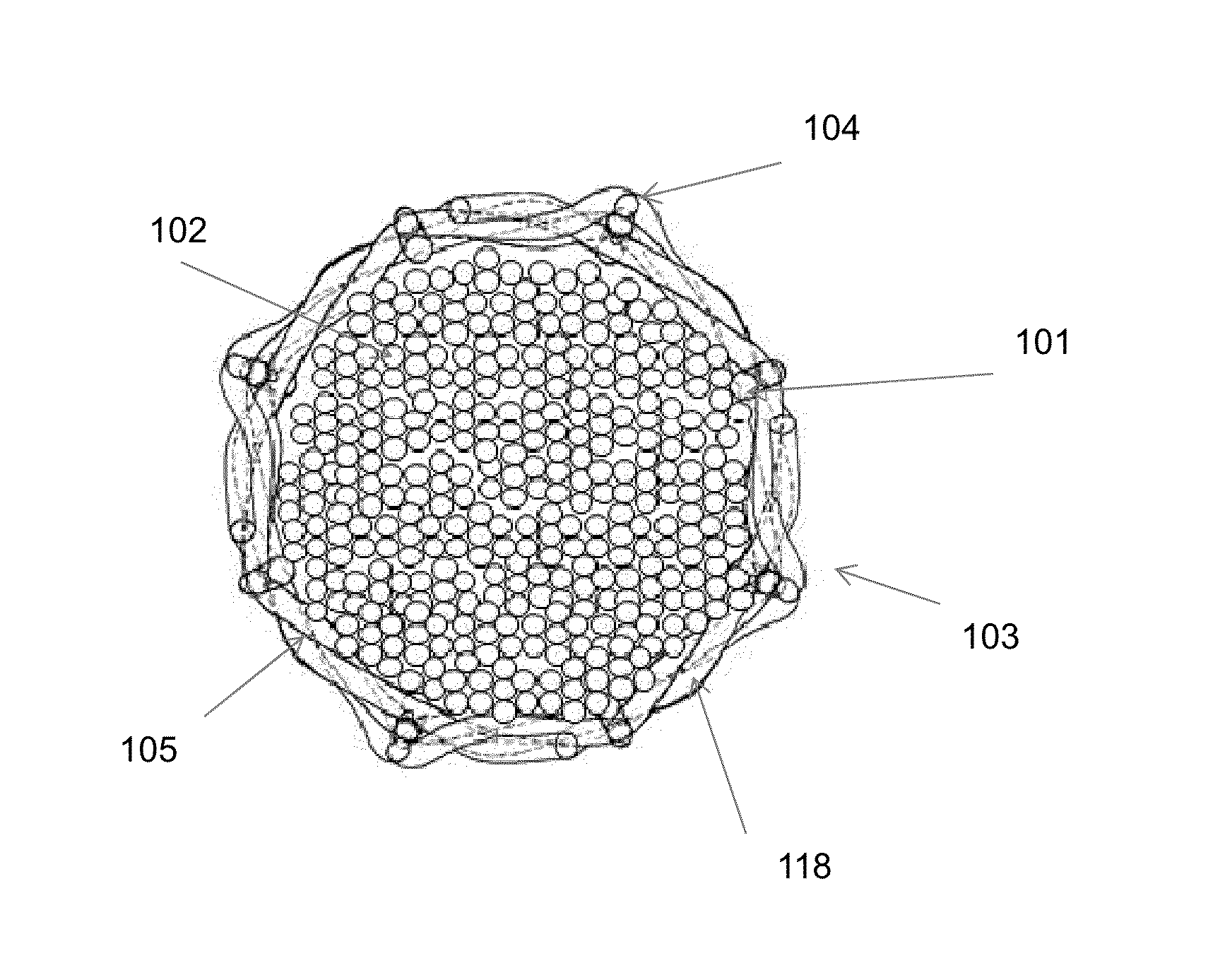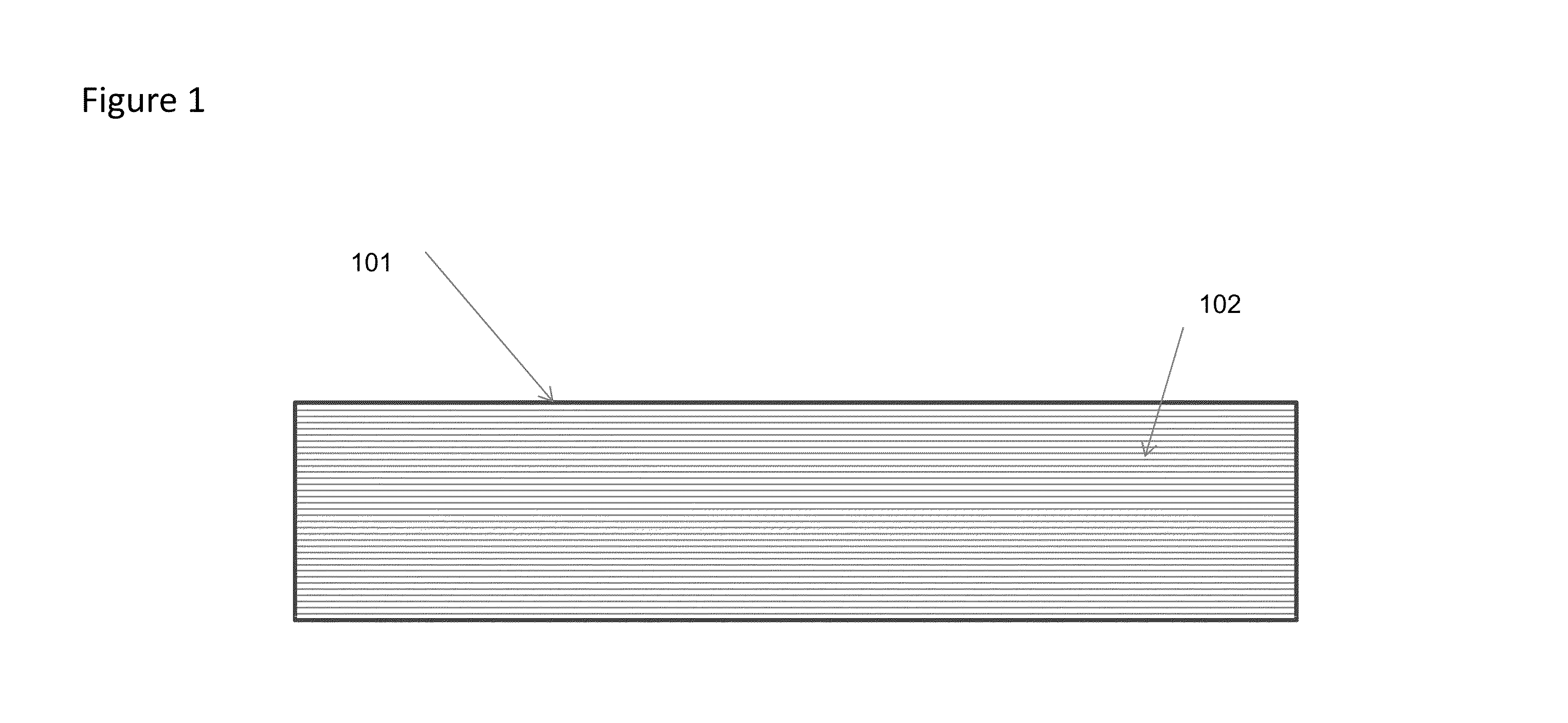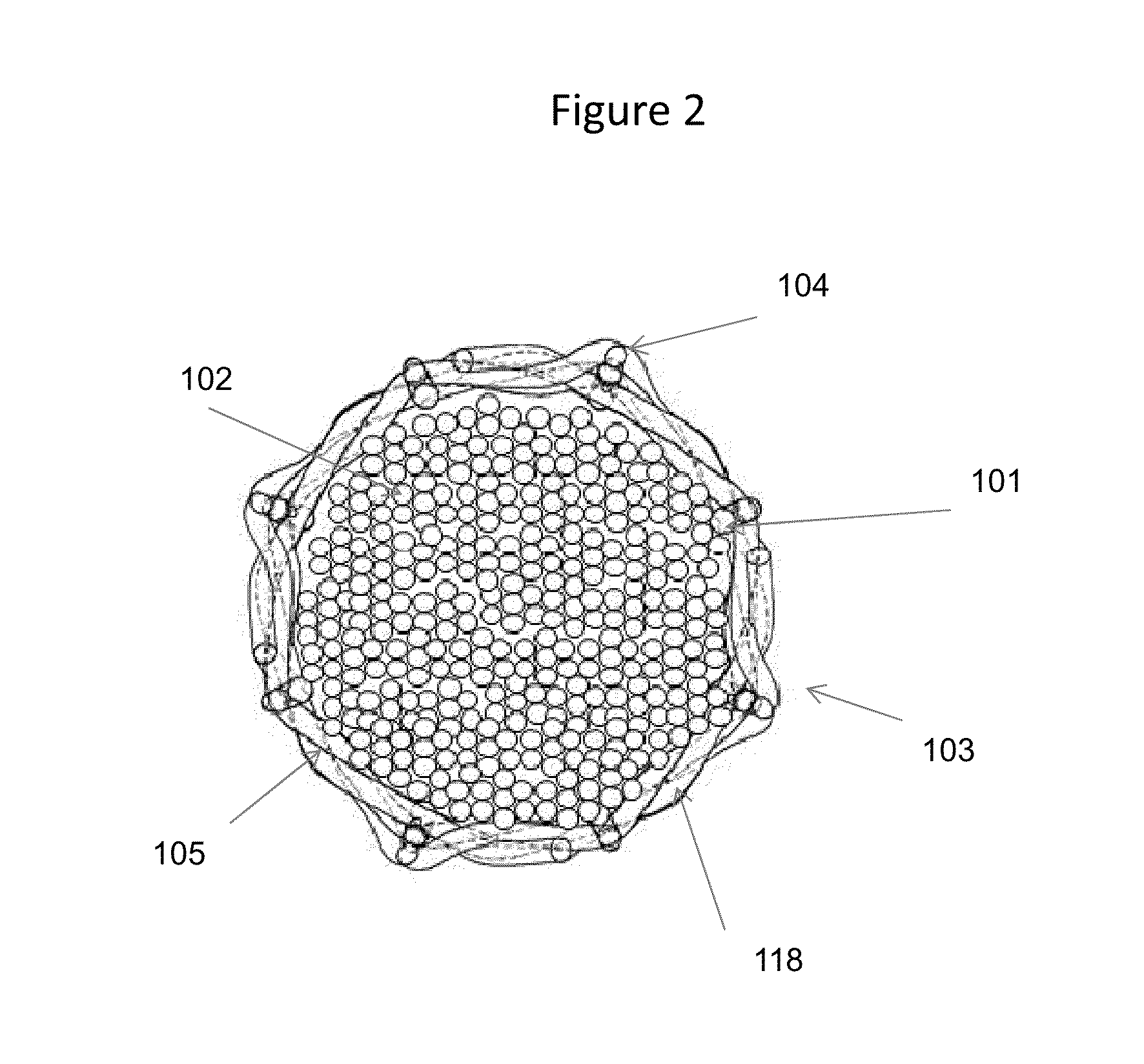Robust pre-impregnated yarn for manufacturing textile composites
a technology of textile composites and pre-impregnated yarns, applied in the field of composite textiles, can solve the problems of abrasion damage, buckling and splitting, and the core is often too sticky to braid well, and achieves the effects of reducing the stickiness of the yarn, high abrasion resistance, and sufficient protection
- Summary
- Abstract
- Description
- Claims
- Application Information
AI Technical Summary
Benefits of technology
Problems solved by technology
Method used
Image
Examples
example 1
[0052]A core of 12 strands of 3 k prepreg tow containing 60% of Hexcel HexTow® AS4D fiber impregnated with 40% UFXXX TCR™ epoxy resin thermal cure epoxy resin (supplied by TCR composites) was pulled through the center of a 32 carrier horizontal Wardwell Maypole braider. The braider was loaded with 16 packages of 200 den Vectran™ yarn which was braided at full coverage around the core. The jacketed yarn was cured at 300 F for 3 hours. The cured yarn was observed under light microscopy, was cross sectioned and observed under scanning electron microscopy. The structure of the core was close packed with minimum voids. Tensile strength was essentially as expected from the amount of carbon fiber in the core and the strength of the fibers in the jacket.
[0053]The yarn was wound onto a braider bobbin for subsequent use on a Maypole braiding machine. The yarn was further evaluated by winding onto carrier bobbins and braiding it into an open composite structure which was subsequently cured at ...
example 2
[0054]A core of 12 strands of 3 k prepreg tow containing 60% of Hexcel HexTow® AS4D fiber impregnated with 40% UFXXX TCR™ thermal cure epoxy resin (supplied by TCR composites) was pulled through the center of a 32 carrier horizontal Wardwell Maypole braider. The braider was loaded with 8 packages of 200 den Vectran™ yarn and 4 strands of axial yarns arranged to create the true triaxial braid. The braided jacked exhibited which was braided at full coverage around the core. The jacketed yarn was cured at 300 F for 3 hours. The cured yarn was observed under light microscopy, was cross sectioned and observed under scanning electron microscopy, tested for tensile strength and bending, and torsion. Although the jacket was lighter weight, the strength of the yarn was about the same as in Example 1.
[0055]The yarn was wound onto a braider bobbin for subsequent use on a Maypole braiding machine. The yarn was further evaluated by braiding into an open composite structure before curing at 300 F...
PUM
 Login to View More
Login to View More Abstract
Description
Claims
Application Information
 Login to View More
Login to View More - R&D
- Intellectual Property
- Life Sciences
- Materials
- Tech Scout
- Unparalleled Data Quality
- Higher Quality Content
- 60% Fewer Hallucinations
Browse by: Latest US Patents, China's latest patents, Technical Efficacy Thesaurus, Application Domain, Technology Topic, Popular Technical Reports.
© 2025 PatSnap. All rights reserved.Legal|Privacy policy|Modern Slavery Act Transparency Statement|Sitemap|About US| Contact US: help@patsnap.com



